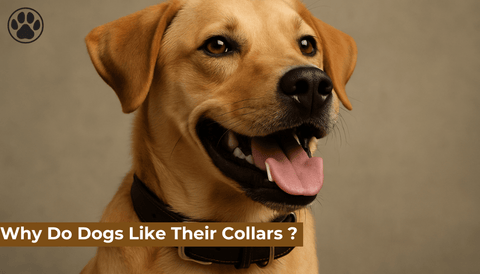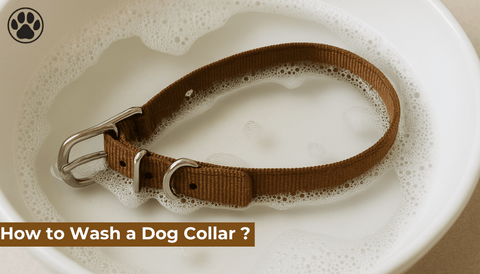
How Many Nipples Does a Dog Have?
of reading - words
Dogs are fascinating creatures, and their anatomy is a topic that often sparks curiosity. One of the most common questions asked by dog owners and animal enthusiasts alike is, "How many nipples does a dog have?" While it may seem like a straightforward question, the answer involves biological variations and factors such as size, breed, and gender. In this article, we will explore the anatomy of dogs’ nipples, their purpose, and common concerns related to this feature.
Understanding Canine Anatomy
Nipples are a standard part of mammalian anatomy, including dogs. They play a crucial role in nursing and are present in both male and female dogs. Unlike humans, where nipples are typically located on the chest, dogs have rows of nipples that extend along their abdomen.
Typical Number of Nipples
Most dogs have an even number of nipples, ranging from 8 to 10. The number can vary depending on the breed, size, and individual characteristics of the dog. These nipples are arranged in two parallel rows, running symmetrically along the dog’s underside.
For example:
-
Small breeds: Smaller dogs, such as Chihuahuas or Dachshunds, tend to have 8 nipples.
-
Medium to large breeds: Larger dogs, such as Labrador Retrievers or German Shepherds, typically have 10 nipples.
It is important to note that these are generalizations. Some dogs may have as few as 6 nipples or as many as 12, depending on their unique anatomy.
Male vs. Female Dogs
Both male and female dogs have nipples. However, they serve different purposes:
-
Female dogs: Nipples are functional in female dogs, especially during pregnancy and nursing. They become more prominent and active when a dog is lactating.
-
Male dogs: While male dogs also have nipples, they are vestigial and do not serve a functional purpose.
The Purpose of Nipples in Dogs
The primary function of nipples in female dogs is to nurse their puppies. These glands produce milk during lactation, ensuring the survival and nourishment of newborn pups. Nipples are equipped with mammary glands, which become active when a dog is pregnant or nursing.
In male dogs, nipples are a result of shared embryonic development. All mammals, regardless of sex, develop nipples early in their fetal stage. This is why male dogs have nipples even though they do not serve a biological function.
Variations in Dog Nipples
Just like humans, dogs exhibit individual variations in their anatomy. These variations can include:
Number and Placement
As mentioned earlier, most dogs have 8 to 10 nipples, but deviations are not uncommon. Some dogs may have an odd number of nipples or nipples that are unevenly spaced. These variations are generally harmless and do not impact the dog’s health.
Size and Appearance
The size and appearance of a dog’s nipples can differ based on factors such as age, breed, and reproductive history. For instance, a female dog that has had multiple litters may have larger or more prominent nipples compared to a young dog that has never been pregnant.
Supernumerary Nipples
Some dogs may have extra nipples, known as supernumerary nipples. These additional nipples are typically small and non-functional. They are not a cause for concern unless they develop abnormalities such as swelling or infection.
Common Concerns Related to Dog Nipples
While dog nipples are usually a benign feature, certain issues can arise that warrant attention from a veterinarian. Some of the most common concerns include:
Swelling or Redness
Swollen or red nipples can be a sign of mastitis, an infection of the mammary glands. This condition is more common in lactating female dogs and requires prompt veterinary care.
Tumors and Lumps
Older female dogs, especially those that are not spayed, are at a higher risk of developing mammary tumors. Regularly checking your dog’s nipples for unusual lumps or changes is essential for early detection and treatment.
Discharge
While lactating dogs naturally produce milk, any abnormal discharge from the nipples in a non-pregnant or male dog should be evaluated by a veterinarian. This could indicate an underlying issue, such as an infection or hormonal imbalance.
Caring for Your Dog’s Nipples
Proper care and regular monitoring of your dog’s nipples can help prevent potential health issues. Here are some tips:
-
Regular Inspections: Periodically check your dog’s nipples for any signs of swelling, redness, or lumps.
-
Maintain Hygiene: Keep your dog’s underbelly clean, especially if they are nursing or have skin folds that trap dirt.
-
Monitor for Changes: Note any changes in size, color, or texture of the nipples and consult a veterinarian if needed.
-
Spaying and Neutering: Spaying female dogs significantly reduces the risk of mammary tumors, while neutering male dogs eliminates the risk of hormonal imbalances.
Frequently Asked Questions
Do all dogs have the same number of nipples?
No, the number of nipples varies among dogs. While most dogs have 8 to 10 nipples, some may have fewer or more due to individual differences.
Why does my male dog have nipples?
Male dogs have nipples because they develop during the early stages of fetal development before the sex of the puppy is determined. They do not serve a functional purpose in male dogs.
What should I do if I notice a lump near my dog’s nipple?
If you notice a lump, it is essential to consult a veterinarian. While some lumps are benign, others could indicate serious conditions such as tumors.
Are supernumerary nipples a problem?
Extra nipples are usually harmless and non-functional. However, they should be monitored for any signs of infection or abnormal growth.
How can I prevent nipple-related health issues in my dog?
Regular inspections, good hygiene, and spaying your female dog can help prevent most nipple-related health problems.




